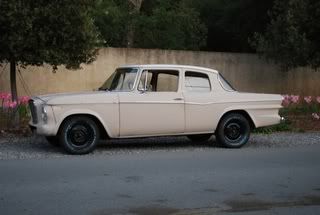I was just at a little local cruise in and while walking around I just kept thinking my 289 is bigger that that 350 or 400 and almost the same size as that 426 wedge - the wedge set up. Why were the stude V8's Sooo large on the outside and so small on the inside. And just how large can they be made whats the largest displacement any body knows of with a Stude block.
John
63' R1 Wagonaire
63' 8E45 Detroit
53' 2R5 R1 Powershift TT Under Construction
57' Transtar 304 NP540 4:09 TT Under Construction (in Picture)
58' 3E6D Stock
59' 4E2 122 Scotsman Deluxe V8 4spd curb side fender
61' 6E7 122 Factory Auto

John
63' R1 Wagonaire
63' 8E45 Detroit
53' 2R5 R1 Powershift TT Under Construction
57' Transtar 304 NP540 4:09 TT Under Construction (in Picture)
58' 3E6D Stock
59' 4E2 122 Scotsman Deluxe V8 4spd curb side fender
61' 6E7 122 Factory Auto






 .
. 



Comment